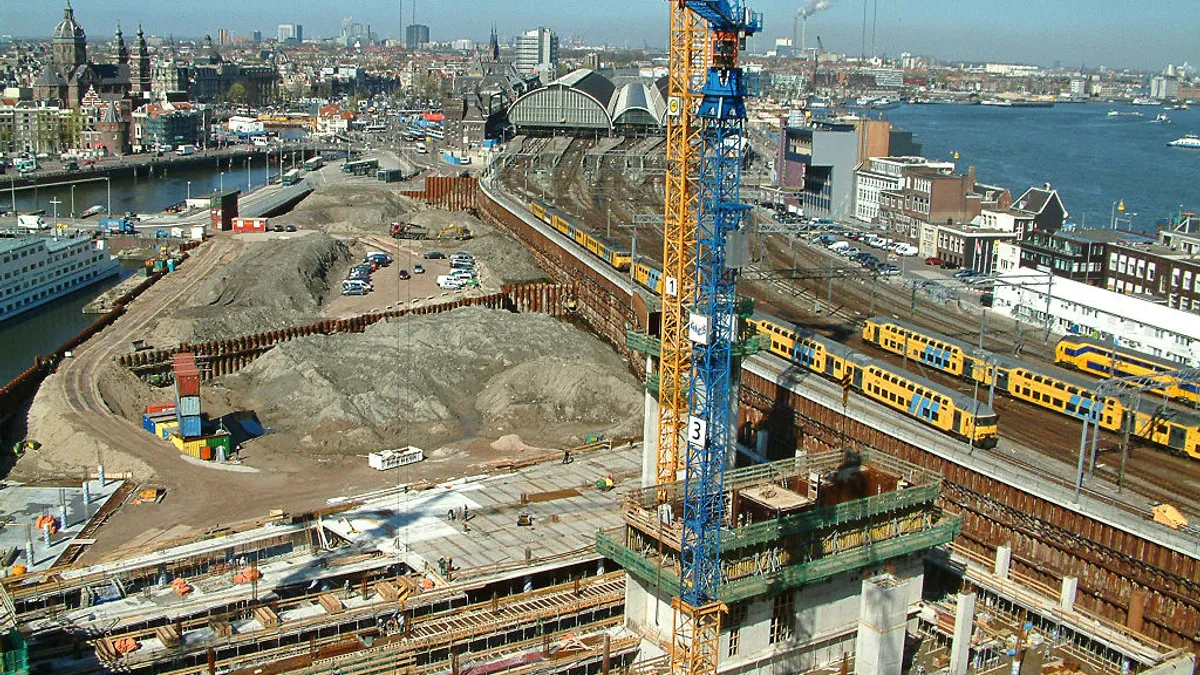Dive Brief:
- Construction spending dipped 1.4% from March to April to a seasonally adjusted annual rate of $1.219 trillion, below the upward-revised rate of $1.236 trillion in March, the Commerce Department reported Thursday.
- Private residential construction fell 0.7% in April to a rate of $516.7 billion, while private nonresidential construction dropped 0.6% to a rate of $426.6 billion. Within residential, single-family rose 0.8%, while multifamily decreased 0.2%. Public construction slid 3.7% during the period.
- April's construction spending figure is 6.7% ahead of the April 2016 mark, and spending in the first four months of 2017 is 5.8% above the same period last year.
Dive Insight:
The Commerce Department revised previous months' spending results and indicated growth each month from January through March, before April's dip. Analysts forecast overall growth in the category for 2017, as Dodge Data & Analytics economists predicted that total construction starts could reach $712.9 billion for the year — a 5% jump from 2016.
Though architecture billings — indicating demand for design services with a nine- to 12-month lead time on spending — cooled down in April, the index stayed in positive territory for a third-straight month, suggesting future growth in spending. The category could also see a boost from the Trump administration's infrastructure plans.
Trump's 2018 budget proposal outlines $200 billion set aside for transportation projects spread over the next 10 years, which seeks to generate $1 trillion in new investments in U.S. infrastructure. Still, a lack of certainty surrounding the full details of President Donald Trump's infrastructure plan, coupled with the ongoing skilled labor shortage, could stand to dampen growth in the category.
On the residential side, housing starts missed analyst predictions for the second-straight month, falling 2.6% in April on the back of multifamily declines. A 2.5% drop-off in building permit authorizations, in turn, could point to a slowdown in residential spending over the next few months. Still, builder optimism reached its second-highest reading since the Great Recession in May on the month's National Association of Home Builders/Wells Fargo Housing Market Index, suggesting that builders are bullish on overall demand in the sector.














